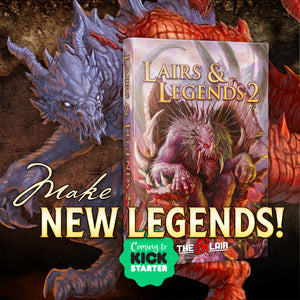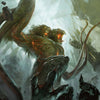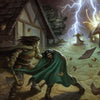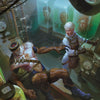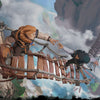What's REALLY Behind My GM Screen
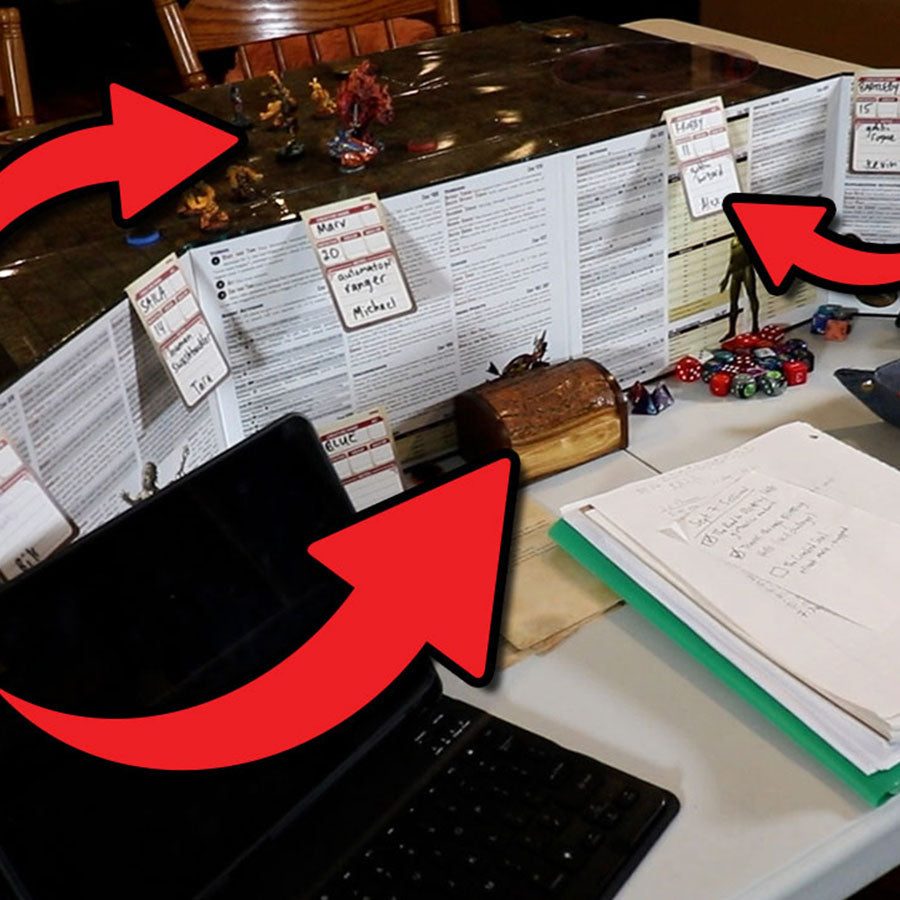
By Luke Hart
Every Dungeon Master has their own rhythm and setup when running a game. Some folks like to keep things simple with a notebook and a handful of dice, while others (like me) build out a whole little command center behind the screen.
Today, I thought it would be fun to give you a look at what I use when I run games—both at home and when I travel to conventions. Consider this a casual tour of what’s behind my GM screen, why I use each piece, and how it all comes together to keep my games running smoothly.
If you want to SEE my screen and all the accessories as I discuss, view the video version below.
By the way, are you a NEW GAME MASTER feeling a bit overwhelmed by everything involved with running a role-playing game? If so, the Secret Art of Game Mastery can help. Get over 100 years of GM experience distilled into practical, easy-to-read advice.
Watch or listen to this article by clicking the video below.
The Core Setup
At the heart of everything is my GM screen. For Pathfinder 2 (my current system), the official GM screen is my favorite—it’s packed with quick reference tables I use constantly. I keep the most important info, like DCs by level, visible and uncovered, while the less important bits get tucked behind other items. On the player-facing side, I clip initiative cards so everyone can easily track the order of combat.
Right in front of me sits my dice tray, loaded with d20s for quick access. I also keep scatter dice for random directions and countdown dice for tracking conditions or hit points. Dry erase markers, pencils, and pens live nearby so I can jot down changes or mark up maps.
Notes, Maps, and Digital Tools
I like having my notes in multiple formats. I print out adventure notes so I can highlight and scribble on them, and I also keep a quick-reference notecard with the big story beats I want to hit that session. On my iPad, I run OneNote for broader campaign tracking and, when needed, I hop online to check Pathfinder rules on Archives of Nethys.
Maps are essential for me. I use a riser to keep the battle map elevated, which saves table space, gives players elbow room, and makes it easier for me to reach over the screen without knocking over minis. Sometimes I pull out big interlocking square maps, other times it’s a simple gridded mat. And when traveling, I pack portable map books or tokens instead of lugging around my whole mini cabinet.
Minis, Tokens, and Monster Cards
Speaking of minis: at home, I have a big cabinet full of them, which makes it easy to grab exactly what I need. When traveling, I slim down to a tackle box with the minis I expect to use. And for real portability, I bring RPG Essentials tokens from Splattered Ink Games—thin, colorful, and easy to carry.
Monster cards are another lifesaver. I store them alphabetically in boxes, but for each session I pull out the cards I’ll need ahead of time. Each card has the stat block on one side and art on the other, which keeps things moving without flipping through rulebooks.
For initiative, I use custom cards from GM Workshop. On one side is just the character’s name; on the other side, I track perception, race, class, and even the player’s real name (because yes, I sometimes forget those mid-game). I even arrange them outside of combat to match my players’ seating order—it keeps me oriented and helps me call on characters properly.
Tokens, Coins, and Tracking Tools
I use colored tokens and matching initiative cards to track different monster groups during combat. Blue for the mooks, red for the boss, yellow for a third group, and so on. It makes it easy to run multiple groups without confusion.
For things like Inspiration or Hero Points, I prefer physical tokens over scribbled notes. My players each get a little coin they can place in front of them when they earn one. It’s tactile, it’s fun, and it serves as a constant reminder. Plus, it gave me an excuse to buy a gorgeous handcrafted wooden box to store the coins in (worth every penny, even if my wife was skeptical at the time).
Books, Bags, and Other Gear
On a side table, I keep core rulebooks and setting books handy. For Pathfinder 2 in Eberron, that means both the system books and the campaign guide. My duffel bag lives there too, stuffed with condition markers, extra maps, timers, and other odds and ends I don’t use every session but like to have nearby.
And yes, I always have a candle burning. My go-to is Firelight Fables candles—they’re coconut-apricot wax with wooden wicks that crackle as they burn. My favorite scent is Dungeon Delve. A candle may not change the mechanics of your game, but trust me: the atmosphere boost is real.
The Little Things
Scattered among all this are plenty of small but important tools:
- A language cheat sheet to track which PCs speak what.
- A notebook for jotting down quick changes, dates, and details.
- Condition markers for minis.
- Coasters and cozies for drinks, because no one likes wet character sheets.
And finally, the riser at the center of the table—honestly one of the best purchases I’ve ever made. It makes space, keeps dice contained, and helps everyone reach minis comfortably. With six players plus me at the table, that little bit of extra organization makes a big difference.
100 Years of GM Experience at Your Fingertips!
Are you a NEW GAME MASTER feeling a bit overwhelmed by everything involved with running a role-playing game? Are you a VETERAN GAME MASTER looking for new tips and tricks to take your games to the next level? Look no further than the Secret Art of Game Mastery.
We at the DM Lair have distilled our CENTURY of accumulated GM experience into an easy-to-read guide of practical advice that you can immediately apply to your games! We've even included our own templates–the things that we use to prepare our ACTUAL games.
Get all three books to master your game:
- The Secret Art of Game Mastery. Contains over 100 years of GM advice distilled into an easy-to-read format. It introduces and explains the tools of the trade, scheduling, playstyle, post-game notes, getting player feedback, and more.
- The Secret Art of Preparation. Brings to your fingertips the actual templates and guides that the DM Lair team uses to prepare games, Lair Magazine, and more. Designed as a three-ring binder, it's intended for you to write directly into for your entire campaign!
- The Secret Art of Notetaking. Gives you the keys to tracking your campaign from session to session just like the DM Lair team. Designed as a three-ring binder, it's intended for you to write in and keep track of your whole campaign!
With so much knowledge and experience on its pages, The Secret Art of Game Mastery is guaranteed to become an indispensable tool for all game masters, new and veteran alike. And if that isn’t enough, the information applies to all game systems and all genres!
-
Posted in
Game Master How-To Articles



